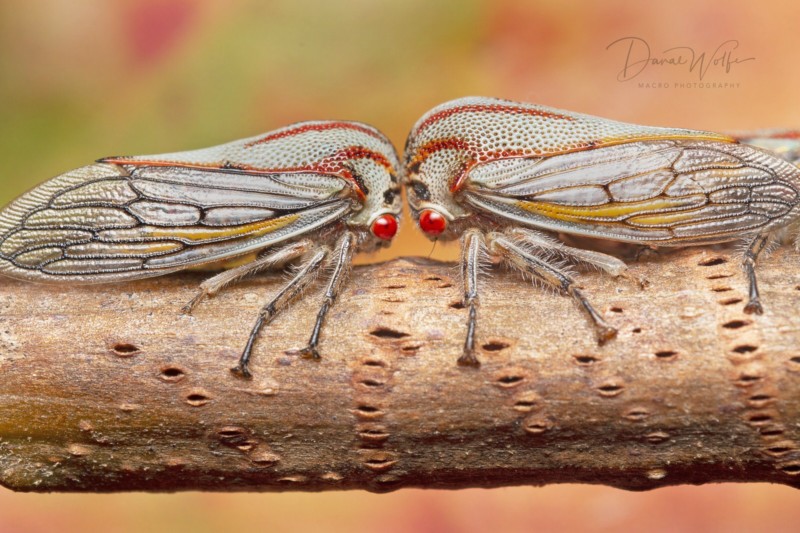Spark Conservation with Backyard Photography
![]()
I’m not your typical conservation photographer. Many conservation photographers and filmmakers spend their careers traveling to infrequently traversed crevices of our earth in pursuit of untold stories of nature and wildlife. I am not so lucky to have traveled the globe, but I have experienced worlds unknown to most. I photograph bugs and share their stories in hopes of changing public perception of insects and spiders.
As a child, I collected picture books of animals and mapped out trips I hoped to take as an adult. I spent my entire childhood longing for the opportunity to travel to somewhere exotic where I could stand in awe of and photograph real nature and real wildlife. I was infatuated with the vast landscapes of the Serengeti and the hidden world of the Amazon rainforest. I never realized my backyard was home to countless exotic creatures living in highly complex ecosystems.

How did I miss out on years of exploring and appreciating the nature in my backyard? I have fond memories of catching tadpoles in the nearby creek (more of a ditch, really) and chasing lightning bugs on unbearably humid summer evenings. Why, then, did I never appreciate those moments as experiences in nature?
I attribute my lack of appreciation of local nature to the lack of nature education in school. I remember learning about the deforestation of the rainforest, but never about the destruction of local wetlands to make room for housing developments and strip malls. It was almost as if we pretended habitat destruction wasn’t happening in our neighborhoods. And maybe that was the point – if we pretended it wasn’t happening, then we didn’t have to face the sad reality that our materialistic habits were (and still are) a cause for the global decline of wildlife.
My college experience helped shape my understanding of nature. One class, “Humans and the Environment,” changed my relationship to the natural world and to wildlife. The professor, Dr. Sarah Mabey, shed light on how my daily habits affected the environment. For the first time in my life, I was faced with the unsustainability of my own actions. From there, I started to shift my thinking that only exotic, untouched areas of our world could qualify as nature and learned to appreciate that my backyard is also nature. Cities are nature. Potted plants and container gardens on balconies are nature. During those college years, I learned it wasn’t enough to just have positive experiences in nature as a youth (of which I had plenty). Children need a nature mentor, someone who can actively facilitate a positive connection to nature. This nature mentor can be a parent or a school teacher, but regardless of who serves in that role, it’s vital to teach children about nature if we wish for them to have a positive and sustainable relationship with the natural world.
Since those middle years of college, my definition of nature has evolved. Today, I recognize everything around me as nature. Farms, yards, cities, suburbs. Each of us has a responsibility to steward the land around us in ways that are ecologically sustainable. For some, we do this through storytelling and education.
For me, conservation photography is about interpreting the natural world – creating emotional and intellectual connections between people and our earth in ways that shape attitude and behavior. A photograph or film might be the spark that connects someone to nature or convinces a lawmaker to create and advocate for environmental policy. With today’s easy access to cameras and social sharing platforms, anyone can be conservation storyteller.
Never make the mistake of believing you may only travel to exotic locations to photograph endangered species to be a conservation storyteller. Conservation starts at home, in our own backyards and public spaces.
![]()
I want to inspire a new generation of conservation storytellers. I want youth and adults who live in cities, suburbs, and on farms to understand their role in the natural world and the impact they can have in conservation of natural resources. I want every child to understand what I didn’t when I was growing up – that their backyard or balcony, no matter how seemingly void of nature, can still be a space that contributes in some meaningful way to the health of the broader ecosystem.
I want people to advocate fiercely for and protect their hometowns because they understand they are part of nature and nature surrounds us no matter where we live. Each of us contributes to environmental issues as much as we contribute to environmental solutions. Whether it’s a single tree at risk of being cut down or a wetland at risk of being filled in for a development, we all have the ability to craft a beautiful visual narrative of why these natural spaces matter. So grab your camera (or your phone) and start telling stories.
About the author: Danae Wolfe is a macro nature photographer residing in NE Ohio. The opinions expressed in this article are solely those of the author. Her primary artistic interests include shooting candid insect & botanical portraits. You can find more of her work on her website, blog, and Facebook page. This post was also published here.